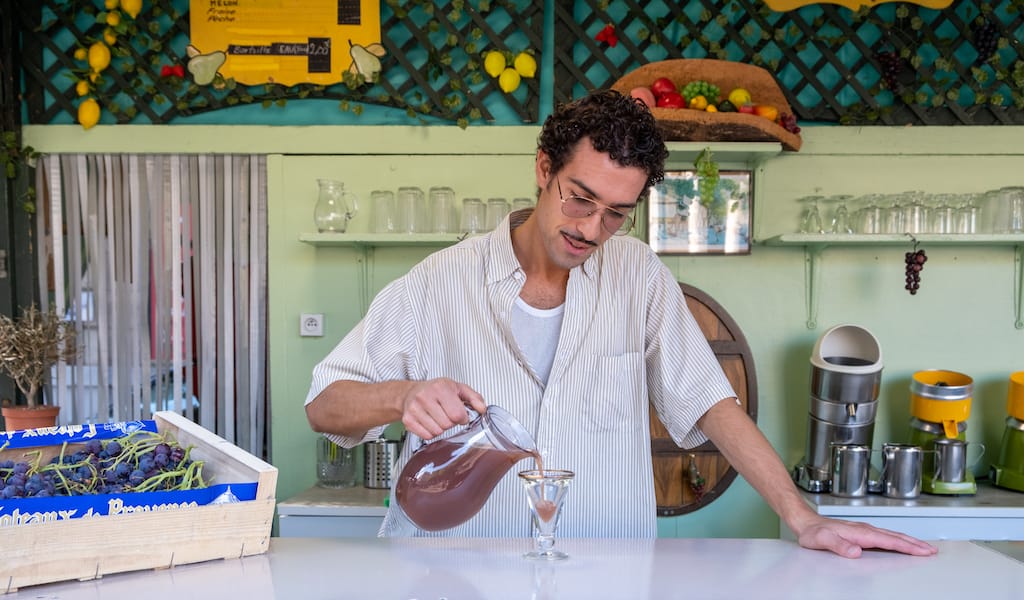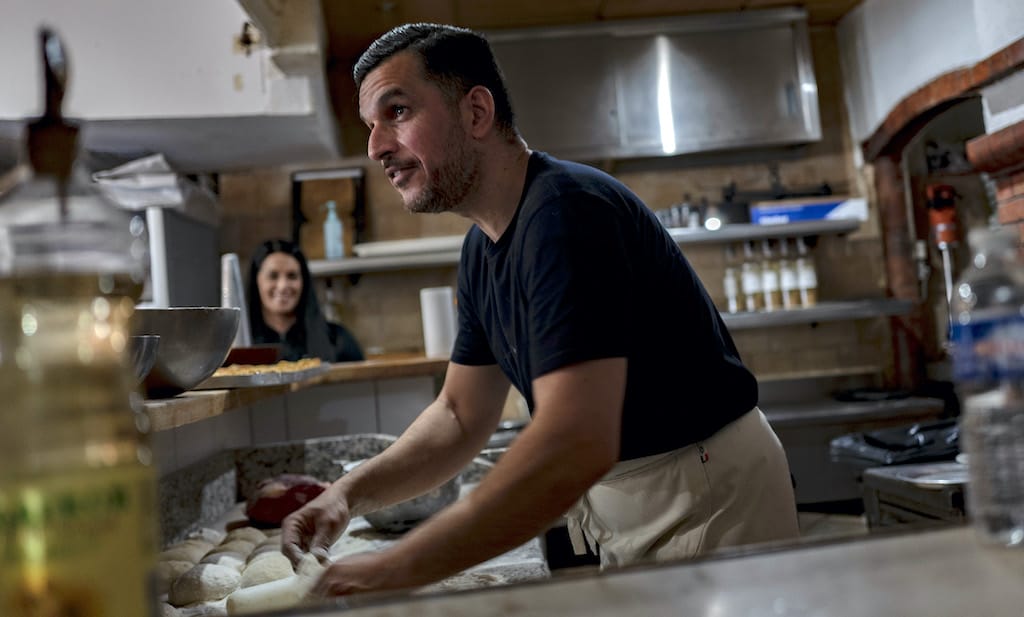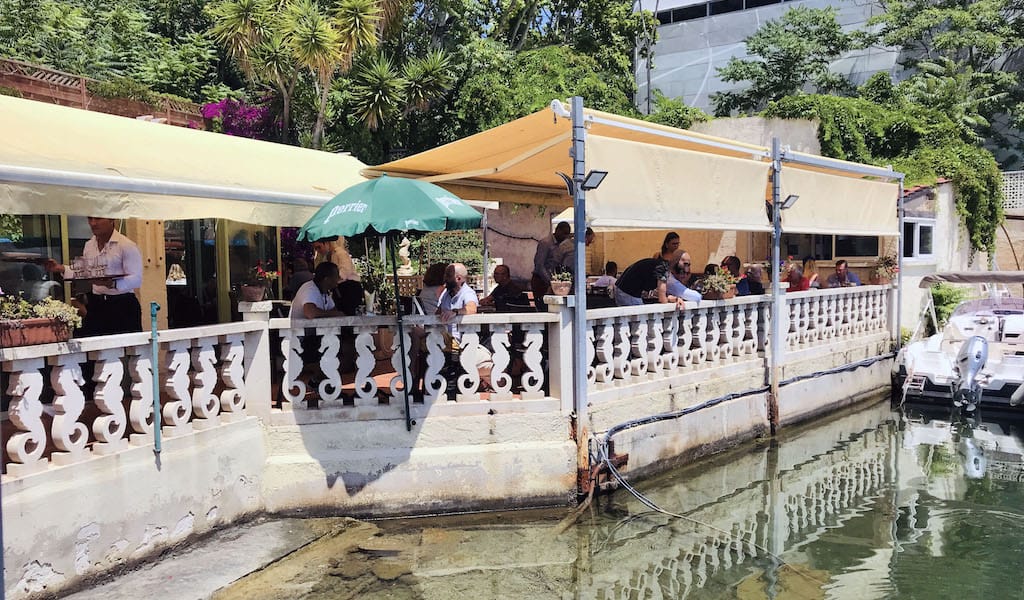When the Phocaeans founded Marseille in 6th century B.C., these ancient Greek explorers launched France’s long history with wine production and consumption. In the 1930s, southern France became famous for another kind of grape juice. In the southwestern town of Moissac, home of the Chasselas grape, Dr. Armand Rouanet touted the amazing health benefits of grape-seeds at his uvarium. At this first-of-its-kind center for grape-based therapies (uva is the Latin root for grape), people would consume a grape-only diet (2-6 pounds a day) to heal everything from cellulite to constipation. Ironically, this grape cleanse was ideal for detoxifying the liver, the organ most damaged by wine.
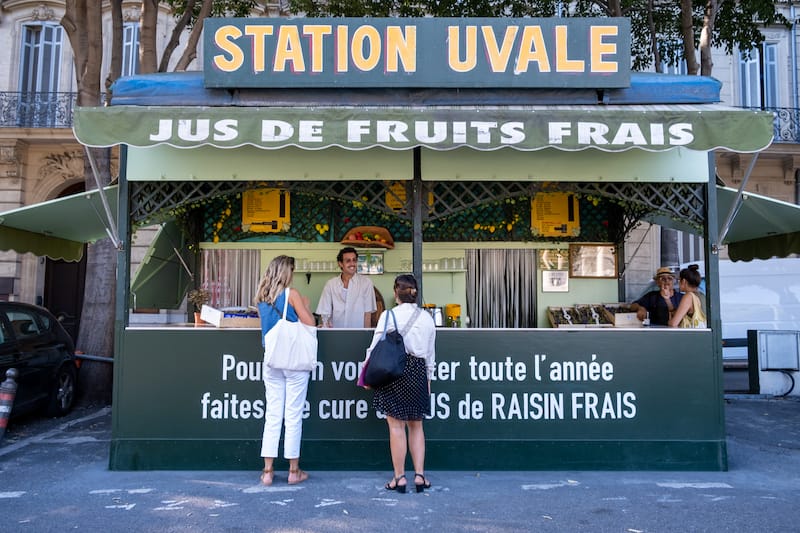
This temple of grape glorification was such a success that dozens of stations uvales sprouted across the south of France to peddle the just-pressed grape juice alongside other fresh-squeezed fruit. Eight of the open-air kiosks were in Marseille, including one next to the popular Toinou seafood stand and another on the main drag, La Canebière, in front of the movie theater that stayed open late. After the arrival of supermarkets, soda and canned beverages in the 1950s, the desire for fresh juice dried up. One by one, the stations uvales shuttered. Except for a sole survivor – fitting for the oldest city in France, the last station uvale is in Marseille, thanks to an enterprising family.
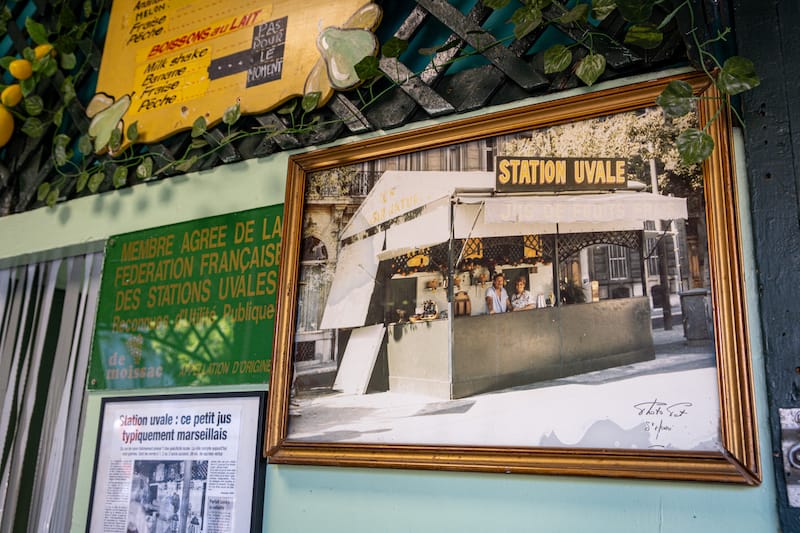
Painted in a two-tone green that harkens vines, the wooden kiosk sits along Cours Pierre Puget, a tree-lined boulevard in the 6th arrondissement. It is dubbed the Station Uvale du Palais for its location in front of the grandiose Palais de Justice courthouse and its shimmering turquoise fountain. “I have the best view in Marseille, plus shade,” winks Yannis Amokreze, the owner. Here, a mix of customers young and old, familiar and new, belly up to the bar. Some take their juices to go. Others, like one elderly neighbor who comes almost daily, lean on the counter for a side of socializing. “It’s a gathering place,” smiles the affable thirty-something proprietor, “accessible to all just for the price of a juice.”
Yannis inherited Station Uvale du Palais from his aunt and uncle, who passionately ran the stand (built circa 1943) for 37 years. Though he grew up watching Eugène stock it with fruit and Maryse man the counter, Yannis never expected to be in the juice business. Covid-19 changed things. Forced to shutter during the pandemic lockdown, the kiosk was stored in nearby Gardanne. Without work, Eugéne and Maryse contemplated retirement at the ripe old ages of 83 and 81. “It was a blessing in disguise,” explains Yannis, “They would have never stopped without the break.”
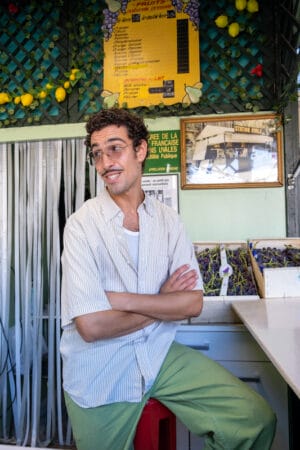
He offered to take the reins. Having worked for big fashion brands in Paris and helping to manage the family’s body shop in Marseille, Yannis recognized that sales was the common thread in his diverse jobs. He had also sold high-end clothes at the hip Marseille shop Jogging. Now he’d be schilling grapes while, most importantly, upholding a family and Marseillais tradition. After two years of Covid-19 closures and a year of negotiating with City Hall, he re-opened at the end of May 2022, to the delight of loyal fans like us.
Table grapes, grown for consumption, have a longer harvest than the wine grapes that are fermented and aged into alcoholic nectar. Picked from around late July to mid-October, Station Uvale uses a handful of cépages (varieties). “We start with Chasselas, the small, white grapes with reddish-brown spots,” explains Yannis. Tinted from the sun, these grapes were the first fruit in France to be certified AOC (Appellation d’Origine Contrôlée, or controlled designation of origin) in 1971. He also uses Cardinale, red grapes that were brought to France from California; Alphonse Lavallée, giant, purple globes; before “ending on a high note with Muscat,” smiles Yannis.

Ever committed to upholding tradition, Yannis sources les raisins (“grapes” in French) from the same farmer, Jacques, that his family worked with for 37 years – using old vines planted by Jacques’ father. Once the supplier of all of Marseille’s stations uvales, Jacques doesn’t deliver, which means Yannis must drive an hour each way three times a week to the Vaucluse to pick them. It’s a trip that Yannis willingly makes to maintain a through line of taste, trust and family. To help him connect the dots, his retired cousin, Sauveur, is teaching him the ins-and-outs of pressing. With his youthful vigor and toned arms from cranking the press, the septuagenarian is living proof that making grape juice also keeps you healthy.
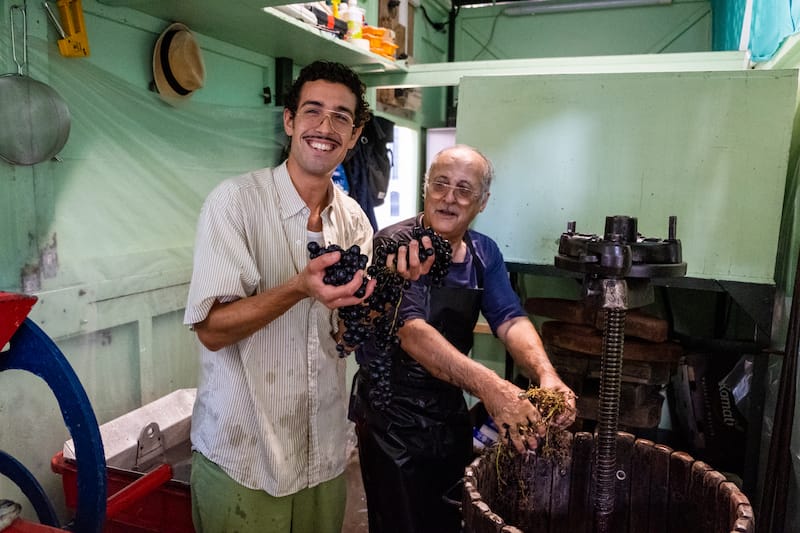
Early in the morning, three times a week before the stand opens, the two press in a small space in the back. Simple, yet physical, it takes 132 pounds of grapes to make around 12 gallons of juice. First the grapes are washed, then put in a fouloir to crush the seeds and remove the stems. In a wooden press that looks as old as the station uvale, they press the grapes five times to extract as much juice as possible. Then, the juice is poured into the refrigerated tank to chill. “Once the grapes are crushed, they begin to ferment,” says Yannis. “You ideally want to consume jus de raisin within two days for the best freshness, though it will keep for longer.”
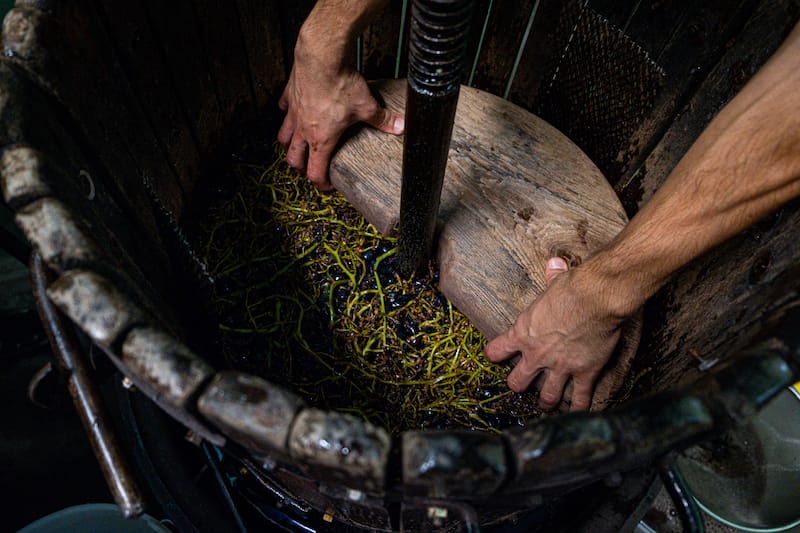
He serves the customers out of an old-timey barrel. Some have been coming for three generations. Some for a daily dose of vitamins in tune with the slogan painted on the façade out front: “Pour bien vous porter toute l’année, faites un cure de jus de raisin frais.” (“To be in good health all year round, do a fresh grape juice cleanse.”) All are here for the flavor. Drinking fresh-pressed jus de raisin is like biting into the best bunch of grapes ever – each drop is jam-packed with sweet and tart goodness. We particularly like the grape juice when we need an energy boost or are battling a cold. On a hot day, it’s heaven.
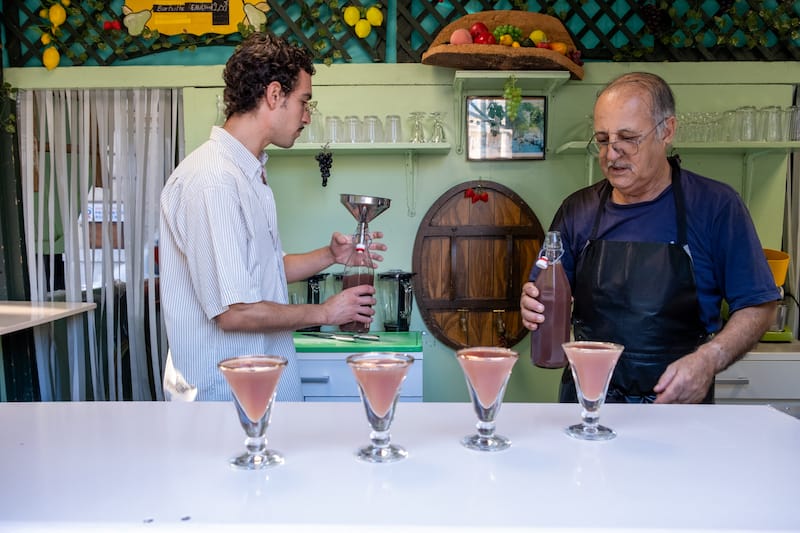
Fresh fruit juice is available at Station Uvale, whether or not the grapes are in season. Watching Yannis chop, blend, and squeeze behind the counter is a lesson in juicing. Peach or melon juice needs a bit of orange juice or water to temper its thickness. Citrus can be squeezed for more pulp or blended for a smoother beverage. When a grandmother orders lemon with her grandson’s strawberry, we learn that citrons have the most variables: with or without sugar, cold or room temperature, crushed or cubed ice. Our favorite is ananas-pamplemousse (pineapple-grapefruit), just the right mix of tart and sweet. Posted above the bar on a sunny yellow sign, the menu has stayed the same for decades, though the fruit milkshakes made by Maryse and Eugène are no longer permitted by the city.

Yannis’ aunt and uncle have passed down their 40 years of experience and advice to their nephew. Don’t bother opening when it rains or when the mistral wind gusts – holidays are also bad for business. Many of the customers have spilled over from them, with a few as far back as the first owner. Yannis admits he has big shoes to fill following his affable aunt. Dressed in matching lemon-yellow Crocs and cotton French work pants, the former fashionista is doing so with style. Watching him chat up each customer, it’s clear that sociability runs in the family. “The counter is inviting,” he explains, “encouraging customers to keep their phones in their pockets and make conversation.”
In his second season of business, Yannis is happy at Station Uvale. “The secret is to be stimulated by what you do,” he grins. His positive attitude alleviates the fatigue caused by the long hours and the complexities of running a small business from another era in modern times. For instance, the six-week delay to the 2023 season’s start due to Marseille’s notoriously slow city hall is another “blessing in disguise” since they’ve now approved that he can remain open year-round. For the stand’s first winter opening ever, Yannis is excited about adding warming soups and herbal teas made with wild plants to the menu, as well as focusing on the famed citrus from nearby Menton.
Though the near future is set, Station Uvale’s long-term fate remains uncertain. The city has potential plans to build a tram route that slices through the median upon which the stand sits. As a private property on public domain, Yannis would be forced to move. Like many Marseillais before him – the citizens who stood up to Julius Caesar and Nazi occupation – he’s willing to put up a fight to keep the juices flowing. After all, it is one of the rare spots in the city where the working class and the bourgeoisie intermingle. A third place fueled by juice.
 June 14, 2022 Chez Etienne
June 14, 2022 Chez Etienne
“Those who don’t know Etienne, don’t know Marseille,” insists a French weekly in a piece […] Posted in Marseille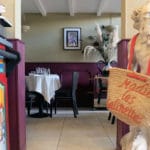 July 27, 2020 Chez Madie Les Galinettes
July 27, 2020 Chez Madie Les Galinettes
From Gascogne’s prized ducks to the buckwheat gallettes of Bretagne, each chunk of […] Posted in Marseille July 16, 2020 Hippocampe
July 16, 2020 Hippocampe
Perched at Marseille’s northern border along the Mediterranean, the port of L’Estaque […] Posted in Marseille
Published on September 20, 2023
Related stories
June 14, 2022
Marseille“Those who don’t know Etienne, don’t know Marseille,” insists a French weekly in a piece about the cult pizzeria. They were raving about both place, Chez Etienne, and person, the enigmatic Etienne Cassaro, who transformed the worker’s canteen his Sicilian dad opened in 1943 into a local institution that endures today. Though Etienne’s light went…
July 27, 2020
MarseilleFrom Gascogne’s prized ducks to the buckwheat gallettes of Bretagne, each chunk of France has its distinct food traditions. In Marseille, the capital of Provence, the recipes brim with the region’s olive oil, garlic and tomatoes as well as plenty of Mediterranean fish. On menus around town, you’ll find an anchoïade here or artichauts à…
July 16, 2020
MarseillePerched at Marseille’s northern border along the Mediterranean, the port of L’Estaque once teemed with fishermen. Starting in the 17th century, local pêcheurs would catch sardines, tuna, mackerel and poissons de roches (the rockfish that are essential to the city’s iconic bouillabaisse.) In the 1960s, these independent fishermen were swallowed up by the increase in…







































